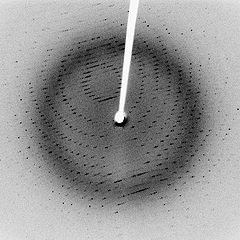Are you wondering what 2014 will bring, aside from lots of fun new Laneway Learning classes? The obvious big events, like the XXII Olympic Winter Games in Sochi, Russia, and the 2014 FIFA World Cup in Brazil, are likely on your radar already, so we’ve sought out some things you may not know about.
A Quick Look Back
Before we glance forward into the future however, check out Google Zeitgiest 2013 to see what the world searched for. It gives a fascinating insight into the world and what draws the attention of people all over the globe. The Trends Globe will let you explore what individual cities searched for as the year progressed.
The top trending search globally was Nelson Mandela, but there were some more surprising ones further down the list. At number 5 comes the Harlem Shake. Peter Capaldi comes in at 87 after a huge spike in interest when he was announced as the next Doctor Who. And my personal favorite: coming in at 82 is Sharknado!
Scotland Votes
After years of debate, the people of Scotland will be deciding whether to remain part of the United Kingdom, or to become an independent nation. The referendum will be happening on the 18th of September with the simple question “Should Scotland be an independent country?”
Current polls generally predict the answer to be “No” with a reasonably high margin.
International Year of Crystallography
The United Nations has declared 2014 to be the International Year of Crystallography, which will be facilitated by UNESCO.
 Crystallography is the study of the arrangement of atoms in solids and molecules, particularly in terms of their affect on chemical properties. Modern approaches often use X-ray diffraction images, like this one, and then use powerful mathematical tools to reconstruct what the structure must be.
Crystallography is the study of the arrangement of atoms in solids and molecules, particularly in terms of their affect on chemical properties. Modern approaches often use X-ray diffraction images, like this one, and then use powerful mathematical tools to reconstruct what the structure must be.
X-ray crystallography was successfully used to determine the structure of DNA in 1953. By analysing an X-ray diffraction image now known as Photo 51, James Watson and Francis Crick were able to figure out the now famous double-helix structure, earning the Nobel Prize in Physiology or Medicine jointly with Maurice Wilkins. However, there remains some controversy over the Prize as many claim that Rosalind Franklin was really behind the discovery.
One of the pioneering scientists to use X-ray crystallography methods to study biological molecules was Dorothy Hodgkin. She discovered the structures of cholesterol, vitamin B12 and insulin. She won the Nobel Prize in Chemistry for her work on vitamin B12.
But why this year? 2014 is the centennial of the birth of X-ray crystallography, pioneered by William Henry, William Lawrence Bragg and Max von Laue.
International Year of Family Farming
Not content with just one, the United Nations has also declared 2014 to be the International Year of Family Farming, which will be facilitated by FAO. It aims to raise awareness of the importance of this form of agriculture, and to develop policies to help sustain it.
Out in Space
The solar system, galaxy, and universe will keep spinning along, barely registering our new year celebrations. But there will be a few interesting things to watch out for in the coming year.
- There will be an annular solar eclipse on April 29, 2014. This is where the apparent size of the moon is a little smaller than the sun, so a ring of light is seen at the peak moment. Although the best views will be in Antarctica, many parts of Australia will be able to see a partial eclipse.
- Comet Holmes reaches the closet point in its orbit to the sun on March 27, which happens once every 7 years. The last time, in 2007, it had an “outburst” which made it so much brighter it could be seen by the naked eye. It also, briefly, became the largest object in the solar system; bigger even than the sun. You will most likely need a telescope to see it this time, unless it has another outburst!
- The Orion spacecraft will conduct its first unmanned test-mission in September. If everything goes to plan Orion will carry astronauts to the moon, asteroids, and even to Mars.
Any Others?
Are there any big events of 2014 that you are particularly looking forward to? Tell us about them on Twitter or Facebook!
The main blog image is in the Public Domain, and is provided by the Electron and Confocal Microscopy Laboratory, Agricultural Research Service, U. S. Department of Agriculture.
The diffraction image in the article is borrowed from Jeff Dahl under a Creative Commons licence.